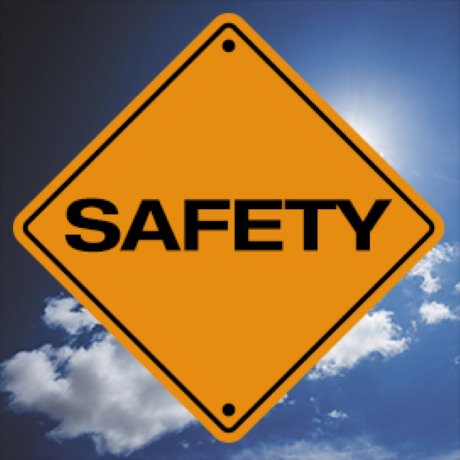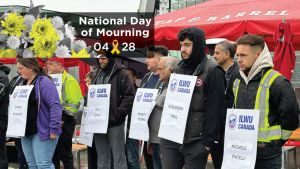Onsite safety culture, rather than union or non-union culture, is more of a determinate of incident and fatality rates, state several industry stakeholders who have worked in safety roles.
Mike McKenna, executive director of the BC Construction Safety Alliance, said he had not seen conclusive data that indicated whether union or non-union sites were safer.
He has worked on both non-union and union sites and the safety culture is the biggest determinate.
"If it is the all mighty dollar that counts, then safety also takes a back seat," McKenna said.
Kelly Scott, president of the B.C. Road Builders and Heavy Construction Association, also says he hasn’t seen or heard of any such industry trend.
"We have members on both sides," he said. "When there is an incident that is safety related, I don’t hear anyone saying watch for those guys because they are union or non-union."
Investigations look at the root cause of an incident and whether it happens on a union or non-union site is not the issue. WorkSafeBC has also been promoting the Certificate of Recognition (COR) safety program.
Phil Hochstein, former long-time president of the Independent Contractors and Businesses Association of British Columbia, who is now a private consultant, said there is nothing to indicate from what he has seen over the years that one site is safer than another.
"All contractors whether they are non-union, building trades, or other try to live up to the WorkSafeBC rules," he said. "No one is purposely going to put someone at risk."
During the past 15 years, the percentage of open shops has increased to 80 per cent versus 20 per cent union, a figure that is the reverse of the situation in B.C. during the 1970s and 1980s. Yet, research looking at the construction industry’s safety rates is not definitive regarding whether union or non-union sites are safer in B.C.
A study entitled A Job to Die For published by Statistics Canada in 1996 looked at fatality rates over four six-year intervals from 1976 to 1993, with Canada construction deaths starting at 2,750, then descending to 1,047, 874 and 829. The graph splitting the deaths by province shows B.C., a highly-unionized province at that time, consistently led across Canada in construction deaths.
But an Ontario report by the Institute for Work and Health, issued in 2015, looking at worker safety and health in Ontario concluded union shops were safer. A survey of 5,797 unionized and 38,626 non-unionized firms found claim rates were 13 per cent higher in union shops for no-time loss claim rates, while 14 per cent lower for lost-time claims. The conclusion was that union shops may encourage reporting of incidents and reduce risks by better identifying them and taking proactive safety measures.
However, another Ontario report issued in 2012 entitled The Union Safety Effect – Myth or Fact? by the Arthur Meighen Institute of Public Affairs looked at the Ontario government’s preference for using union contractors as this would result in a better safety record over non-union contractors.
"The empirical data evidence is overwhelming that it does not," said the report. It also tackled the allegation that non-union contractors suppress reports of time-loss incidents in order to avoid associated costs. The report found nothing in the data sets indicated that was true.
"There is no justification for a policy of restricting bidding on public construction jobs to union contractors on the grounds that union contractors provide a safer work environment than non-union workers do," it said.
The Vancouver Regional Construction Association’s annual Awards of Excellence honour companies that have achieved records with no injuries. Those honoured in 2016 are a mix of union and non-union companies.
In 2015, Bills 9 and 35 of the Workers Compensation Amendment Act, 2015 were passed, and included rolling out new enforcement tools, including stop operations, compliance agreements, citations and expanded injunction powers. In the 2015 WorkSafeBC annual report, 702 stop work orders were issued compared to 628 the previous year and 80 in 2011.
After more than 25 years with the Council of Construction Associations, Grant McMillan, a strategic advisor, said he has seen "no evidence" that points to either union or non-union sites being safer.
While the statistics have reversed from mainly union to open-shop today, McMillan is not convinced that relates to the decrease in injury rates. From 2000 to 2015 B.C. "injury rates have been cut in half," he said, but that is more a reflection of all parties invested in construction safety. "The critical factor is how the workplace is managed."
Specialists who implement safety programs for construction clients also don’t see safety as a union or non-union issue.
"Through our experience, it has been the safety culture and the people working with the organization and how they integrate their business goal and safety goal," said Fernando De Melo, principal advisor for Pacific Safety.
De Melo also said there is a culture shift with younger generations more accepting of safety as it is happening outside the workplace.
Derek Malone, managing director of We The Safe Inc., also feels onsite safety culture is the key to preventing incidents and fatalities. Malone said construction is about controlling the risks and hazards.
It’s not simply onsite, but before any work begins. All members of the team should provide input to increase safety on a new project.
"Two weeks before work begins you start to identify those hazards and put in controls at each level," he said.











Recent Comments
comments for this post are closed